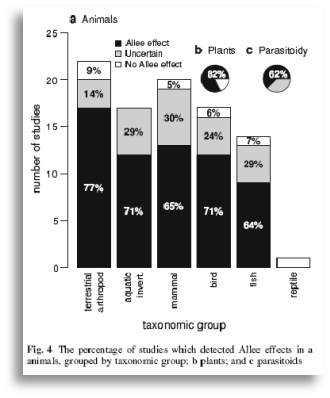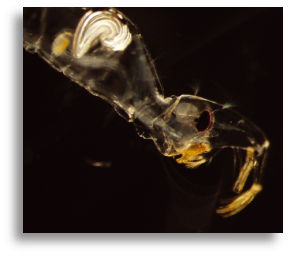Allee effects are a small-population phenomenon in which average individual fitness is an increasing function of population size or density. Mechanistically, Allee effects are typically thought to result from cooperative behaviors such as cooperative breeding, foraging, or defense or from mate limitation in sexually reproducing species. An interesting feature of Allee effects is that if strong enough, an Allee effect induces a lower unstable equilibrium population size known as the critical density. This critical density is a hurdle to colonizing populations and accelerates decline in populations headed for extinction. Despite the widespread view that Allee effects are common and increasing interest in the topic, there are remarkably few animal populations which have been shown to exhibit Allee effects. Past work by ourselves and colleagues has taken three approaches: (1) theoretical models to show when and how severe Allee effects might limit colonization (especially of cyclically parthenogenetic zooplankton like Bythotrephes longimanus and Cercopagis pengoi), (2) experiments with lab populations in which we attempt to experimentally induce Allee effects, and (3) analysis of field data on invading species to detect statistical “signatures” of Allee effects like critical densities or retarded wave speed. Future work is planned to continue along each of these lines.
Extinction due to a predator-driven Allee effect
Recent studies on animal populations in the field have attributed positive-density dependence at low density to a predator-driven Allee effect…read more…
 Gypsy moth invasion and the Allee effect
Gypsy moth invasion and the Allee effect
A partial differential equation model of population growth and dispersal developed by Lewis and Karieva (1993) predicts that invading populations subject to an Allee effect spread more slowly, and could not persist unless the initial extent of the population exceeded a critical invasion area…read more
 Statistical signatures of Allee effects in natural populations
Statistical signatures of Allee effects in natural populations
Another approach we take towards understanding the Allee effect is to look for statistical “signatures” in population dynamics, i.e., patterns in population abundance or distribution that are best explained by Allee effects…read more







Comments are closed, but trackbacks and pingbacks are open.